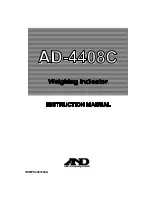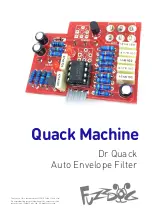
Q-7.1 NET RADIOMETER
6
Inspect the silica gel monthly to ensure it is still
blue and white. If the color changes to pink
and white, replace it with dry silica gel (this
may have to be done more frequently in wet
weather). Wet (pink and white) silica gel can
be dried by removing it from the desiccant tube
and baking at 130°C until it returns to a blue
and white color. Remove the desiccant tube
end cap to remove and replace the silica gel.
CAUTION: After the desiccant tube has
been replaced, install the end plug and
vinal cap. Be sure the holes in the vinal
cap point towards the ground.
If the Q-7.1 is installed at a remote site it may
be convenient to have a spare desiccant tube
for quick replacement (be sure to remove the
outer end caps from both tube ends before
installing). Spare desiccant tubes are available
from Radiation Energy Balance Systems.
4.2 CONDENSATION
Condensation on net radiometer windshields
causes incorrect measurements. This is
because water does not transmit longwave
energy. An example of this problem can be
seen by comparing measured net radiation
values from two different net radiometers at
night, one on which dew is allowed to form and
another on which dew is prevented. Without
dew both instruments would indicate a similar
net radiation level, e.g. -50 W m
-2
. However,
on the instrument on which dew was allowed to
form a net radiation level of about zero would
be indicated, while the other radiometer would
maintain the reading of -50 W m
-2
. The RV2
ventilator can be used to prevent dew from
forming on the windshields.
4.2.1 Causes of Internal Condensation
If condensation develops inside the domes
check the following:
Desiccant
Make sure that the desiccant is dry (i.e. still
blue and white).
If it has turned pink, replace it with dry
desiccant or bake it until it is dry (see section
4.1 above). If the desiccant is pink only at the
tube end nearest the sensor head, this
indicates a leak somewhere on the sensor.
Windshields and O-rings
Check that the windshields and O-rings are in
good condition and are properly seated against
the radiometer frame (see below).
If there is still no obvious reason for the internal
condensation, check for possible leaks in the
sensor as follows:
1. Remove the desiccant tube.
2. Immerse the radiometer in water and blow
gently into the open end of the support
arm. A stream of bubbles will indicate the
location of any leaks.
3. Dry the instrument with a soft facial tissue.
If the windshields get dented, reinflate
them by blowing into the end of the support
arm.
CAUTION: When drying the windshields,
dabbing rather than wiping them will help to
prevent scratches.
4.2.2 Possible Internal Condensation
Problems After Installation
There is a small possibility that condensation
may occur on the inside of the windshields
when the Q-7.1 is first installed in the field.
This condensation is caused by evaporation of
hydrocarbon solvents used in the
manufacturing process and may be more
apparent after several hot, sunny days if
ambient temperatures are low enough.
If you notice condensation inside the
windshields after the first few days of sunshine
following installation, remove the windshields
as described below. Allow the solvent vapor or
condensation to escape or evaporate from the
inner air space for 15 minutes then replace the
windshields.
4.3 CLEANING
The windshields may be washed with a camel
hair brush or with a paper tissue and distilled
water.
CAUTION: Coarse paper or cloth will
scratch the windshields and should be
avoided.
Summary of Contents for Q-7.1
Page 11: ...This is a blank page ...






























